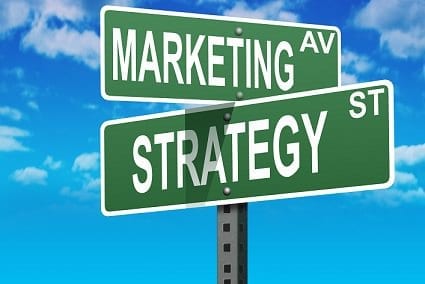When owners of a business look strategically at ways to boost their bottom line, their gaze inevitably falls almost exclusively on the revenue line as they explore how to acquire more customers, and how to make more sales. Sometimes though it’s a matter of working smarter, rather than harder if the business is going to revitalize its bottom line. Owners should be prepared to cast an eye over ideas for controlling costs, enhancing productivity, marketing smarter and reining in credit terms. All these can contribute significantly to boosting net earnings.
Bottom Line Defined
When we discuss a company’s bottom line, we are generally referring to as the businesses’ net earnings or net profits. While the top line refers to a company’s gross sales before expenses, most companies look to improve their bottom lines through either growing the “top line” (revenue) or driving productivity and reducing costs through the expenses line.
Boosting The Bottom Line
Management can focus on a range of tactics to increase the bottom line. For starters, increases to revenue flow through to increase the bottom line. This may be achieved by ramping up production, reducing discounts or sales returns, expanding the product portfolio through line extensions or new brands or by increasing prices. Other income options include improving yields on investment and interest income, rental or co-location fees. The one-off sale of surplus property or plant and equipment also improve the bottom line through better asset management.
A company’s options for increased its bottom line, by reducing expenses are also flexible. Adopting more efficient processes or equipment or substituting less expensive raw ingredients goods may realize productivity gains for the business. Similarly, reducing premises costs, managing wages and benefits, drawing down tax benefits, and limiting the cost of capital are alternate methods to boosting the bottom line.
In addition to these methods, here are five options for reducing business costs and boosting your bottom line.
1. Embrace Ecommerce And The Digital Economy

Thoughtfully executed inbound digital marketing has emerged as a “must-have” capability for today’s customer savvy, organization. Used effectively, inbound marketing attracts followers for your brand and helps convert them into advocates by generating leads and engaging website visitors with rich and compelling content, augmented by social media distribution channels. All these benefits come at a fraction of the cost of traditional advertising.
If your traditional marketing strategy is delivering increasingly diminishing returns, losing traction with your prospects and customers, while costs creep ever upwards eroding your return on investment the time may be right for you to explore the options for an inbound digital marketing strategy.
A study by management consultancy McKinsey shows small businesses could increase productivity by ten percent by migrating more aggressively online. This online activity could be as simple as replacing physical bulk mail outs (bulk mail saves enormously on postage) with email campaigns. Another advantage of eCommerce is it reduces the need for expensive retail space by allowing many businesses to operate out of a warehouse while trading online.
Similarly, changing from landline telephones to VoIP services are also increasingly seen as a valuable way to integrate communications services into a digital business model while reducing costs.
Pushing more assertively into online channels can also deliver an increase in sales. One report found half of all small businesses are already offering their goods and services online, with an additional 15 percent planning to adopt eCommerce in the near future.
2. Market Smarter, Not Harder

Smarter marketing is all about paying close attention to the return on investment (ROI) attached to marketing spend. Many marketing strategies are growth focused and prioritize customer acquisition often at the expenses of customer retention. However, research indicates targeting existing customers is significantly more profitable due to the lower cost of customer retention compared to customer acquisition.
When evaluating marketing strategies to increase your bottom line and satisfy marketing goals, focus on ways to decrease customer acquisition costs. Target existing customers with attractive up-sell or cross-sell offers. Your potential high-value customers are more likely to purchase additional products from you because they already believe in your brand.
Not only is this a cheaper path to revenue generation but it also increases the lifetime customer value of your customer base by keeping your brand top of mind with them. This approach reinforces customer satisfaction levels while simultaneously increasing sales giving the businesses a dual spike on both the top and bottom lines.
3. Outsource Nonessential Operations

Outsourcing has been around for a long time now and has proven its worth particularly for small or specialty businesses. In today’s competitive operating environment, having specialist skill sets in-house makes little sense financially. In fact, sometimes it is preferable to outsource selected functions or systems to third parties. In addition to costing less than a full-time employee, third parties tend to be more performance oriented.
Five of the key benefits outsourcing includes:
- You get access to more experts
- Things get done fast
- You’re able to focus on what matters
- You can share some risk
- You can reduce costs
Outsourcing your payroll is one example of “saving time, money, and resources.” It also puts compliance in the hands of experts, which reduces your time, stress, and money. Other potential outsourcing candidates include your IT support and your company’s website management. The five most outsourced functions include:
- Data entry
- Payroll
- Human Resources
- IT Support
- Social Media and Website Management
Evaluate your operation to establish if any part of it could be done cheaper and more effectively for you off-site. In time, your business premises may become less essential, especially for online companies enabling you to downsize. In that case, working from home, or renting desks in a co-working space, could prove more cost-effective than leasing an entire building.
4. Compare Training With Freelance Option

Productivity is one the keys to reducing business costs while driving your bottom line. Being able to produce more with the same or fewer resources has obvious benefits. In realizing these benefits, however, owners have two paths open to them.
Skilled, trained employees who understand the scope of their roles and their personal KPIs can save companies thousands of dollars a year in efficiency gains. The time and cost of training employees, whether as productive team members, engaging customer service representatives, or enthusiastic sales staff are repaid through higher-quality services and products, increased output, higher customer satisfaction scores and great customer retention rates. A robust learning culture supported by programs focused on developing technical and functional skills, streamlining company processes and powering team-based competencies are the building blocks of a sustainable competitive position.
Alternatively, tapping into the freelance talent pool has emerged as a viable staffing strategy, particularly for filling specialist technical roles. Freelancing is a great strategy for capping your staffing overhead as you only pay for the work they perform. If you have varying workload volumes or your work is seasonal or comes in fits and spurts, you don’t have to worry about generating sufficient work to keep a full-time employee occupied. Freelancers also come with the added financial advantage of being responsible for their own benefits.
Freelance talent and allowing staff to telecommute directly impacts company’s’ bottom line by reducing:
- Utility charges thanks to lower power and water use
- Office space requirements
- Downtime lost to travel and transport delays
With the advent of eCommerce and distributed online work, business is now able to hire people from all over the world rather than being limited to your local talent pool. Website and social media management, content creation, and inbound and content marketing are all roles that lend themselves to being filled by freelancers. If you are looking to manage your staffing costs and more closely align staff costs with business activity, hiring freelancers is definitely worth considering.
5. Put Your Overhead Expenses Under The Microscope

There are a group of typical costly overhead expenses that are the usual suspects when it comes to torpedoing a company’s profitability. The first step is to look hard at reducing your office cost. Explore the option of sharing space with another sympathetic company eliminate expensive office fit outs by introducing an open office floor plan, reducing your office needs by hot desking or telecommuting.
Adopt office automation software to streamline routine tasks, such as accounts payable, email marketing and data storage eliminating head count. If you still do mail outs, concentrate them into bulk mailings to save on postage and introduce a high-volumes photocopier/printer to reduce per page costs and eliminate equipment duplication. Every two or three years, refresh your quotes for commodities such as insurance, printing, and office or stationery supplies to reduce costs. Discretionary budgets should be reviewed annually to identify potential options for cost reductions as the business needs evolve.
Chronically late-paying customers can pose serious cash flow situations resulting in additional bank fees and charges to fund work in progress. Look at late payment instances and either cut poor paying customers loose, or tighten their credit terms and reduce their credit line. Revise your credit terms to include the provision of late fees or interest charges on outstanding invoices. Manage the credit terms for chronic late payers by insisting on partial payments prior to new projects beginning. Offering an affordable installment plan can also encourage delinquent clients to reliably make partial payments.
Adopt a green policy. Reduce the amount of paper used day-to-day in the office, saving on printing, supply, and maintenance costs. Cutting down on paper waste is good for your company’s bottom line as well as for the environment. Some easy steps to save paper include:
- Change your printer/copier default settings to print and copy double-sided
- Use secure electronic file exchange services in place of couriers
- Reuse waste paper for scratch or notes
- Tighten margins and compress fonts on printed reports
Install long-life, eco-friendly fluorescent light bulbs and low-flow faucets and toilets to save on utility costs. You can even write off some green measures as business expenses come tax time. You can get quotes for photocopiers here.
Reduce your supplier costs by paying invoices early or on time. Many suppliers offer small but useful discounts to clients who pay ahead of schedule. It’s common to be offered a 2 to 3 percent discount on invoices paid in full within 10 days, instead of the usual 30 days trading terms. As long as paying early doesn’t impact your cash flow, it usually makes good financial sense to pay early. This is especially true in a low-interest environment, where the cost of short-term borrowing to bridge any shortfall is unlikely to be greater than the value of the discount on offer.
Where Does Your Bottom Line Go?
A company’s bottom line is not transferred from one reporting period to another on the income statement. Accounting entries are completed, closing out your temporary your revenue and expense accounts at the end of the reporting period. On closing out these accounts, your the bottom line (the net balance) is swept to your retained earnings.
At this point, a company may opt to use net income in several ways. The bottom line can be distributed to shareholders or investors in the form of a dividend. Retained earnings may also be used to fund stock buybacks reducing equity costs. Or a company may simply redeploy its retained earnings into brand and product development, capital investment (plant and equipment) debt reduction or other growth strategies.
Conclusion
There is no doubt running a business is expensive. However, there are simple steps you can take to manage your overhead, reign in your overheads and transform your cost base. The above are just five ways to take your business’s’ costs in hand and boost your bottom line. So, get creative in how you look at your business. There are many ways to reduce expenses, improve profit margins, and position your bottom line for robust health.



